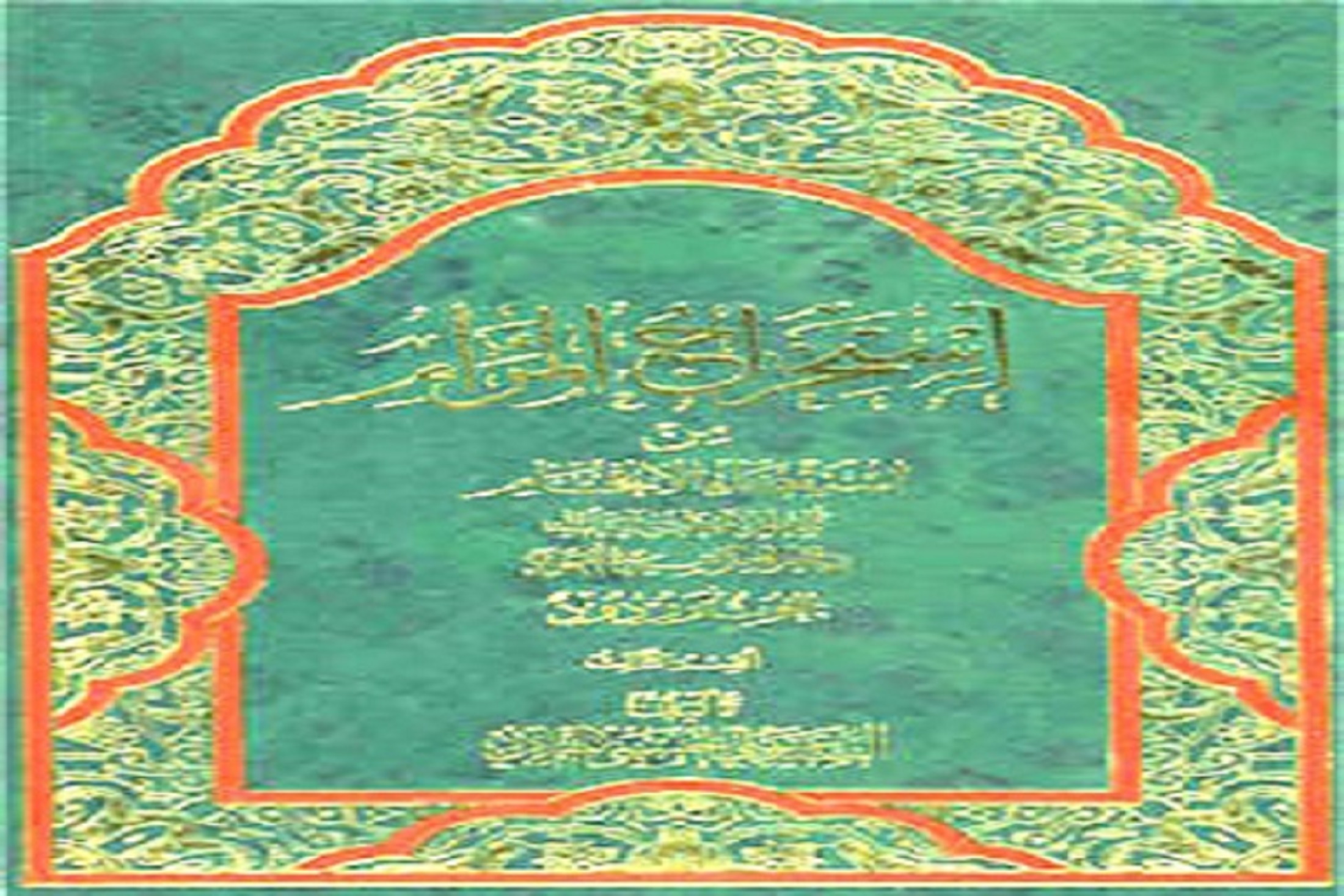The Myth of the Marriage of Hazrat Umme Kulsoom (a.s.) with Umar b. Khattab – Part I
The myth of the marriage of Hazrat Umme Kulsoom (s.a.), the daughter of Ameerul Momineen Ali b. Abi Talib (a.s.) is one of the points of contention and debate among the lovers of Ahle Bait (a.s.) and their enemies. The enemies use this fabricated incident to fulfill their evil motive of propagating that the relations between Imam Ali (a.s.) and Hazrat Fatima (s.a.) on one side and the usurpers of their rights on the other side were cordial and hence the Shias have no right to curse these personalities.
Qutb-e-Rawandi in his famous book Al-Kharaaij, narrates from his chain of narrators to Umar b. Ozainah that he asked Imam Sadiq (a.s.), “People argue with me and say that Ameerul Momineen (a.s.) married his daughter to so and so.”Imam (a.s.) who was sitting reclining, sat up straight and said angrily, “Do you accept that that Ali (a.s.) married his daughter to so and so? One who assumes so has deviated from the right path”Then he (a.s.) held both his hands tightly and said,
“Glory be to Allah, could Ameerul Momineen (a.s) not intervene between his daughter and him and liberate her. They have lied. It was not as they have said. They say, when Umar proposed to Ali (a.s.) for Umme Kulsoom, Ali (a.s.) refused.”
[Al Kharaaij Wal Jaraaih by Qutbe Rawandi, vol.2, p. 825]
In the above tradition, Imam Sadiq (a.s.) has used the word “Glory be to Allah (Subhanallah). In Arabic, there are 2 usages of Subhanallah – one in the meaning of purifying Allah from all associations and attributes and the second usage in the meaning of amazement. Here Subhanallah is used in the meaning of amazement (Kalimatu Taajjub). Imam (a.s.) expresses his amazement that Ali (a.s.) would definitely have stopped the so-called marriage – meaning marriage did not happen.
With this clear explanation,, Imam Sadiq (a.s.) has proved this incident to be a myth.But keeping in mind the stubbornness of the Nasibis and their agenda, it becomes necessary to analyse this myth from the ancient Ahle Tasannun source books and to expose its baselessness for the seekers of truth.
The story of the marriage of Umar b. Khattab and Hazrat Umme Kulsoom (a.s.) cannot be traced in Sahih Bukhari and Sahih Muslim but is recorded in other Ahle Tasannun books either in brief or in detail. There are many books which mention different aspects and versions which leave the reader with more questions than answers on the ‘marriage’.
The most prominent version of the traditions
Umar b. Khattab proposed to Ali (a.s.) for the hand of Umm Kulsoom (s.a.) who was his daughter from Hazrat Fatima (s.a.), the daughter of the Holy Prophet (s.a.w.a.). Ali (a.s.) apologized and said, “She is still a child”. Umar replied, “By God, it is not so, you want to avoid this marriage. If it as you say, then send her to me.” Ali (a.s.) returned and called for Umm Kulsoom. He gave her a cloth and said, “Go take this to the commander of the faithful and say that my father has said to you, how do you find this cloth?” Umm Kulsoom went to him and delivered the message. Umar caught her dress and pulled her towards him. Umm Kulsoom asked him to leave her. Umar left her and said, “How noble and honourable. Go and tell your father: how beautiful. It is not as you said.” Then he married her. [As-Sair wa Al-Maghaazi, p. 248]
Similar traditions have been narrated by other scholars in their books with varied wordings but similar concept.
When we analyse this tradition, we find two strange behaviours from the current and the future caliph of the Muslim nation. These behaviours are not only against the acceptable limits of Islam but also against the acceptance of the general practices of humanity.What kind of a man, (that too the caliph of the Muslim nation) would tell the father of a daughter to send his daughter to him so that he can take a look at her?
On the other hand, what kind of a man (leave alone a man like Imam Ali a.s.) will accept this request and send his daughter to another man for him to ogle at? (We seek refuge in Allah) These are behaviours absolutely against basic intellect let alone Islam.
Based on the above, if the traditions are correct, then the current and future Muslim caliphs acted against Islam and intellect, and if the caliphs did not act in such an un-Islamic and inhuman manner, then the tradition is false. But anything can be expected from those who have forsaken the door of the Ahle Bait (a.s.). These are the same people who insult the Holy Prophet (s.a.w.a.) of carrying Ayesha on his shoulders in public (God forbid).
Let us now analyse the narrator of this tradition from Ahle Tasannun books and authors.
The above tradition is documented by the Ahle Tasannun scholar Ahmad bin Abdul Jabbar from Ibne Ishaaq. Regarding him, Ibne Abi Hatim Raazi, a leading Ahle Tasannun analyst of narrators, writes as follows: I have written traditions from Ahmad bin Jabbar, but I refuse to narrate from him as he thinks very highly of himself. [Al Jahru Wal Taadeel, vol. 2, p. 62, point 99]
Here, his own father narrates that: Ahmad bin Abdul Jabbar is not reliable. [Tahzeebut Tahzeeb by Ibne Hajar, vol. 1, p. 36, point 88]
Was Hazrat Umme Kusloom still a child when Umar brought the proposal for marriage with her?
In all the traditions mentioning the marriage of Hazrat Umme Kulsoom (a.s.) with Umar, it has been mentioned that she was a child when Umar proposed the marriage. Let us see with help from Ahle Tasannun sources whether this is true. Historians are unanimous that this proposal from Umar for marriage with Umme Kulsoom came in the year 17 A.H.
[Tarikh-e-Yaqubi by Ibne Waazeh, vol. 2, p. 139; Tarikh al-Islam by Zahabi, vol. 3, p. 166]
The famous year of birth of Hazrat Umme Kuslsoom is 6 A.H. [Al Aqilah Wal Fawaatim by Shaakiri, p. 74; Umme Kulsoom by Dukhayyal, p. 9]
‘Umme Kulsoom, the daughter of Ali Ibn Abi Talib (a.s.) was born in the year 6 A.H., she saw the Messenger of Allah (s.a.w.a.) but did not narrate anything from him.’
In some of the Shia sources, the birth of Hazrat Umme Kulsoom (s.a.) is recorded in 7 A.H. [Awaalim al-Uloom by Bahrani, vol. 11, p. 984]
Considering her date of birth, either in 6 A.H. or 7 A.H., and the date of the marriage proposal in 17 A.H., she was either 11 or 12 years at the time and such a person is not considered a child, especially like some of the narrators have mentioned: ‘Umar b. Khattab married her while she was a little girl and had not reached puberty.’
[Tabaqaat al-Kubra by Ibne Saad, vol. 8, p. 463]
Based on this, the Umme Kusloom in discussion cannot be the daughter of Ameerul Momineen Ali (a.s.) and Hazrat Fatima (s.a.). She could be Umme Kulsoom the daughter of Abu Bakr, or the daughter of one of the other wives of Ali (a.s.).
Continued in part II…..



